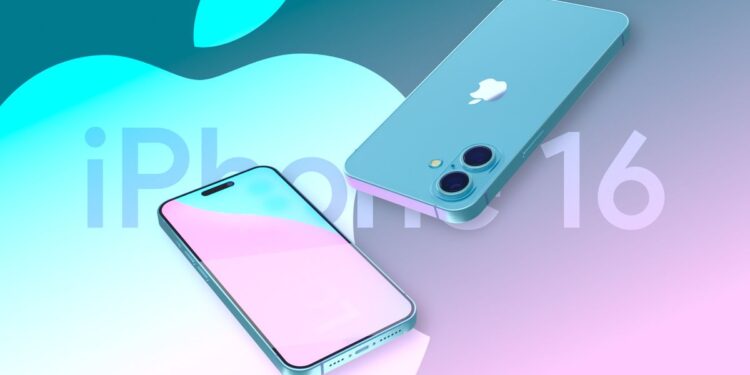Anticipation was palpable prior to Apple’s reveal of its newest smartphone iterations. Now that the iPhone 16 series has officially launched, initial preorder activity has been surprisingly sluggish, leading to speculation about what may have gone awry for the tech titan’s high-end offerings.
On September 9, Apple officially showcased a variety of new products, which can be technically categorized as annual refreshes of its current lineup. Amidst much excitement, the company unveiled the Apple Watch Series 10, fresh AirPods, and the iPhone 16 series—featuring four variations: the iPhone 16, iPhone 16 Plus, iPhone 16 Pro, and the premier device, the iPhone 16 Pro Max.
When compared to the previous year’s models, the iPhone 16 lineup appears largely similar, introducing only a new Camera Control button, enhancements in camera capabilities, larger displays on the Pro versions, along with improved battery longevity. Furthermore, Apple accentuated its commitment to integrating cutting-edge artificial intelligence features into its latest mobile devices, alongside various software improvements.
Sadly for Apple, the hype leading up to the launch of its new iPhones did not seamlessly transition into robust post-announcement demand. Following the commencement of preorders on September 13, TF International Securities analyst and seasoned Apple journalist Ming-Chi Kuo revealed in a blog entry that the eagerness for the new iPhones was significantly lower than anticipated, especially for the Pro models.
Upon reviewing preorder sales data from the first weekend, Kuo reported that the iPhone 16 Pro and Pro Max fell short by 27% and 16%, respectively, compared to their iPhone 15 equivalents from the previous year. With an anticipated initial weekend sales figure of 37 million units across the entire iPhone 16 range, Kuo stated that Apple’s smartphone performance had decreased by about 12.7% year-on-year.
Overall demand and customer satisfaction remain high for Apple
Given that the new iPhone series didn’t generate the same positive metrics as earlier versions, discussions have emerged regarding the potential decline of Apple’s consumer loyalty. Such loyalty often wanes when expectations are unmet. While the alleged “upgrades” of the iPhone 16 appeared to lack the impact necessary for substantial sales, market analysts have noted that the overall demand for iPhones remains robust.
For example, Bloomberg analyst Mark Gurman pointed out that there has been a noticeable stagnation in the iPhone series’ design evolution since the departure of former chief design officer Jony Ive and his team in 2019. According to him, the last significant hardware redesign occurred in 2020 with the launch of the iPhone 12. Nearly five years later, the iPhone design has remained fairly constant. Nevertheless, Gurman observed that devoted customers still tend to upgrade their devices every year or two.
Last month, the customer satisfaction assessment platform Retently shared that Apple recorded an impressive Net Promoter Score (NPS) of 72 based on 2022 data—an increase from its previous score of 63 in 2018. The NPS serves as a reliable indicator of consumer loyalty, reflecting satisfaction levels and the likelihood of customers recommending the brand. Apple’s achievement of one of the top NPS ratings in the technology sector underscores its continued appeal among long-term users.
When brand loyalty goes beyond sales
Recently, the smartphone market has undergone significant changes, with many consumers retaining their devices for extended periods and choosing to postpone upgrades whenever feasible. Market saturation has also contributed to a slowing of smartphone sales. Moreover, consumers are facing increased economic pressures in a post-pandemic landscape. These factors may have influenced the demand for Apple’s latest smartphones even before the iPhone 16 was revealed.
In a broader context, an observed decline in iPhone demand does not imply diminishing brand loyalty. Apple’s ability to maintain its premium pricing strategy over the years indicates that its customers and target audience appreciate its products, even if there’s less urgency for frequent upgrades. According to market intelligence provider IDC, millions of consumers prefer to continue purchasing Apple products and services due to established trust in the brand, rather than a lack of competitive alternatives.
A weak start for iPhone 16 likely won’t be the end of the story
Although the iPhone 16 series has had a rocky beginning, this does not preclude the possibility of recovery and improved sales relative to last year’s devices. Kuo highlighted that a crucial aspect of the lackluster demand for the iPhone 16 was the absence of its primary feature, Apple Intelligence, at launch. This cutting-edge AI software will become available to U.S. iPhone 16 users in October via a beta update, while other areas may experience longer wait times.
While discussing how the gradual deployment of Apple Intelligence might impact the iPhone 16’s reception, analyst Gil Luria from D.A. Davidson told the New York Post, “We are not worried if preorders don’t demonstrate significant growth. The (AI) features will be introduced incrementally… suggesting that the upgrade cycle could emerge over the next 12 to 18 months.”


